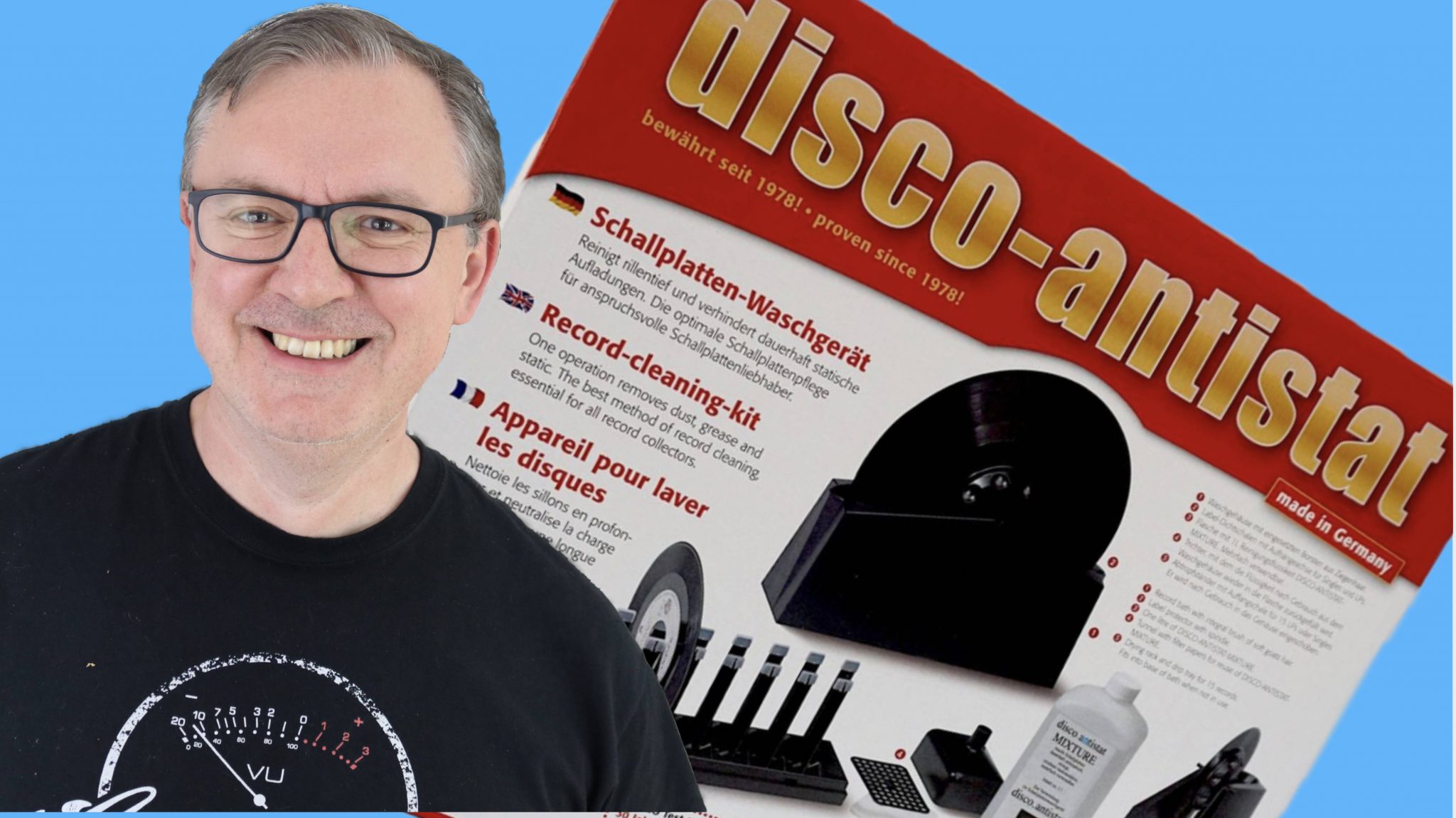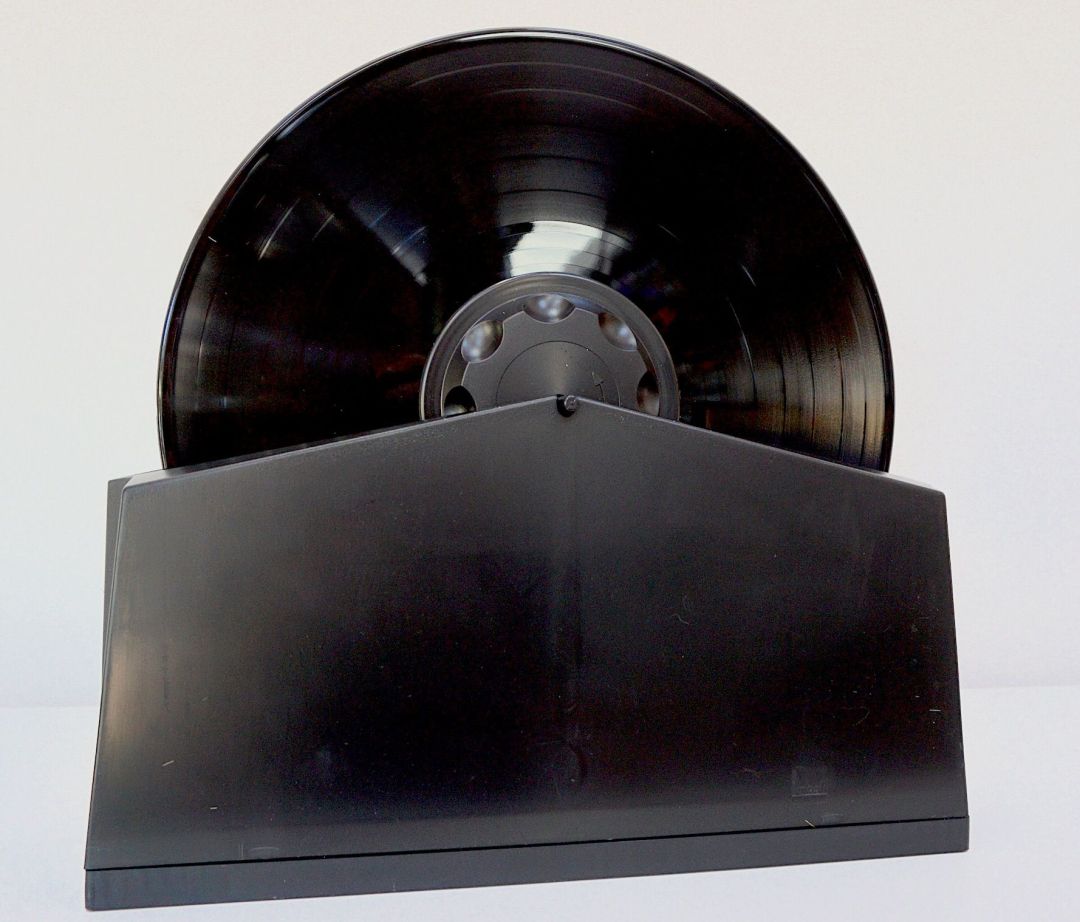The Article
DISCO-ANTISTAT FROM KNOSTI ON YOUTUBE
16th October 2020

Offering a low-cost, manual vinyl cleaning solution, Paul Rigby readies for a quick wash and brush up
Includes comparison with Spin Clean and Closer Look section for set up and use.
[Don’t forget to check out my Patreon Page at www.patreon.com/audiophileman, for exclusive postings and more!]
Please check out description for ‘Buy’ links.
To see the video, click:




Hi Paul,
I did try to press the ‘like’ button above, like you asked, but I’m afraid it just kept going round in circles for me to log in. Anyway, I’m glad you reviewed this, partly because I was intrigued by your mention of the oil from the record production process, which I didn’t know about, and largely because I’ve got one. Actually, I’ve got the Disco Antistat II, which is a slightly improved version, having a handle to turn the hub, and little movable metal clips to hold the spindle in. It is that little bit easier to use than the original, like my Dad has, in which, as I understand it by the way, you’re technically supposed to put your fingers in the hub indentations either side to rotate, rather than as you did, but hey, if it works, it works.
I usually do a batch of records, until I fill the rack perpendicularly, then filter the fluid from the bath, back into the bottle, and then later filter the remaining fluid from the rack, after the records have dried, which seems to work fine, to be honest, and still cleans the records well. However, like you, I do get that build up of released crud onto the stylus, and I’ve always worried I might be at risk of damaging the stylus, as well as being annoyed with the distortion that can occur the first time you play a cleaned record, so I’ve wondered what was causing it not to simply all come out into the bath, and was therefore very interested in what you had to say about it.
The options I have considered, but not yet tried, are: putting a dried record back through the dried goat hair brushes the next day, or simply using a carbon brush while the record rotates on the turntable before playing. Would either of these work? I particularly worry about scratching a record if I used the goat hair brushes dry, and I haven’t actually got a carbon brush right now, though I have had them years ago, so I know what they’re like, and I assume I could find one easily enough online.
Also, one of the supposed properties of the Disco Antistat fluid, is that it removes static build-up from the record, so if you use a different fluid instead, such as your home-grown isopropyl/water/surfactant mix, will it still do that?
Kind regards,
Marcus.
Hi Marcus – that ‘like’ feature came bundled with something else but I’ve never really liked it because I feel that I’m turning into Facebook – so your comment prompted my to bin it. Ta. If you like something I’d much prefer to hear about it here.
I too have a 2! I hope to do an update review soon. And yes, true, true – I should have used those indentations. It’s a fair cop.
The antistatic properties of the Disco are over-hyped in my opinion because the mechanical movements you make during the cleaning process will add static. A Zerostat, once the cleaning process has been completed, will be more effective.
Also, any anti-stat gains you do get are far outweighed by the gunk build up on the stylus. I much prefer the use of distilled water and 1% alcohol because the latter removes a layer of what, grease, surface oil, etc all on its own. The Disco liquid does not remove this. So, in terms of performance as well as lowering your blood pressure, I’d recommend binning the Disco liquid and moving on to better things.
Hi Paul,
Thanks for the reply. I just looked up the Zerostat in general, because I’d never heard of it, and then I noticed your article about the Zerostat III, so I read it. From what you’ve said, I reckon the Zerostat is a must-have purchase. Remarkably simple to use too. I’d assumed I’d have to be waving it round the record, but no!
I shall take your advice on the fluid too, particularly as my custom Van Den Hul cartridge & stylus are precious to me. So, should I just use a 1% isopropyl alcohol mix in distilled water, or should I use surfactants too? Also, should I ensure it is distilled water rather than deionised? I ask because deionised is the preferred last wash when cleaning laboratory glassware, but it also becomes slightly acidic once exposed to air, and may carry pathogens, because it has not been boiled. There is an alternative too, in that you can get distilled water that has then been deionised – just to make life more complicated! 🙂
Kind regards,
Marcus.
Hi Marcus – I would go for distilled and 1% alocohol in the bath and use a surfactant directly on the vinyl.
I hope to be producing a feature/video on cleaning your vinyl in the future. I had to produce this Disco piece first because it will feature in that later video.
Oh and I checked my video – I did use the clamp indentations to screw on/off, from what I saw. Where did I not use them? I’m confused.
Hi Paul – I didn’t mean to screw on & off, which you did – I meant to rotate the record in the bath. Obviously with version 2, that becomes unnecessary, because of the handle. Cheers. Marcus.
Oooohhhh, I see where you’re at Marcus. I think I’d find that tough because of the lack of leverage. Did you do that? If so, did you find that easy to do?
Hi Paul. Yes, before I got the version 2, that’s how I used to do it. As I understand it, that was the way you were supposed to do it, like I said, but I didn’t like rotating it with the edge of the record anyway, because the record can dig into your skin – particularly thinner ones with sharper edges. You have to bear in mind that I started using my Dad’s version 1, somewhat over thirty-five years ago, around the age of eleven, with rather more tender fingers than I have now! The thing is, even back then, I never found using the wheel to be that difficult, as when you’ve got all your fingers & thumbs engaged, from both hands, I found you have plenty of leverage. Obviously, having the handle on version 2 is easier though. 🙂 Cheers. Marcus.
Thanks for that, Marcus – I’ll give it a go then 🙂